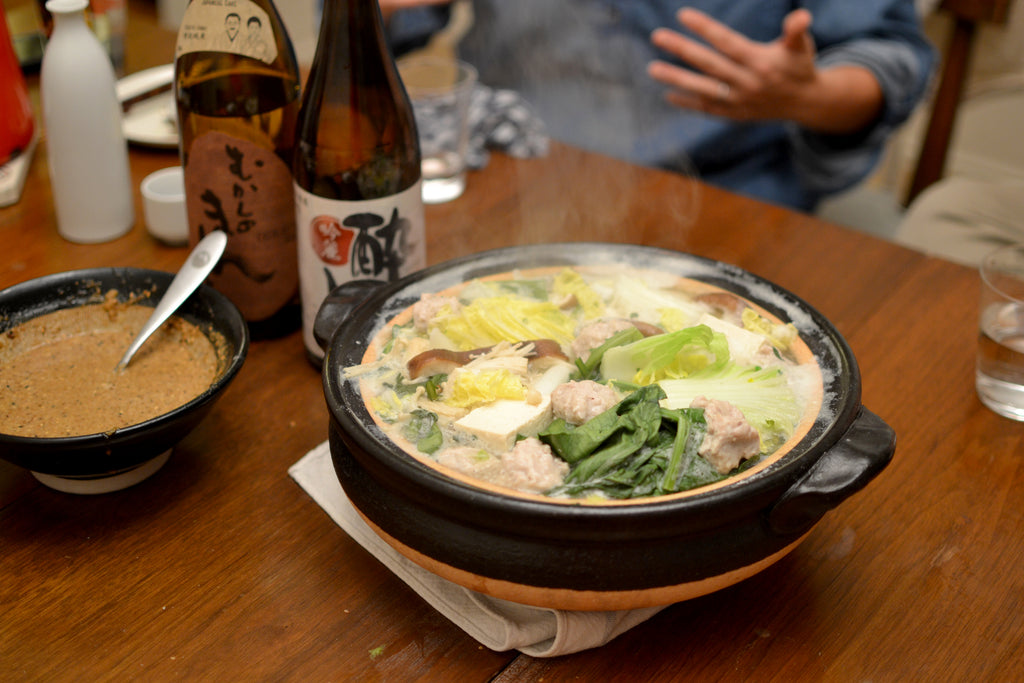
When the days become shorter and the air crisper, it's time to bring out my donabe from the depths of my kitchen cupboards. I give it a good dusting-off and wash, then let it sit in the sun to dry. Once this ritual is complete, nabe season has officially begun.
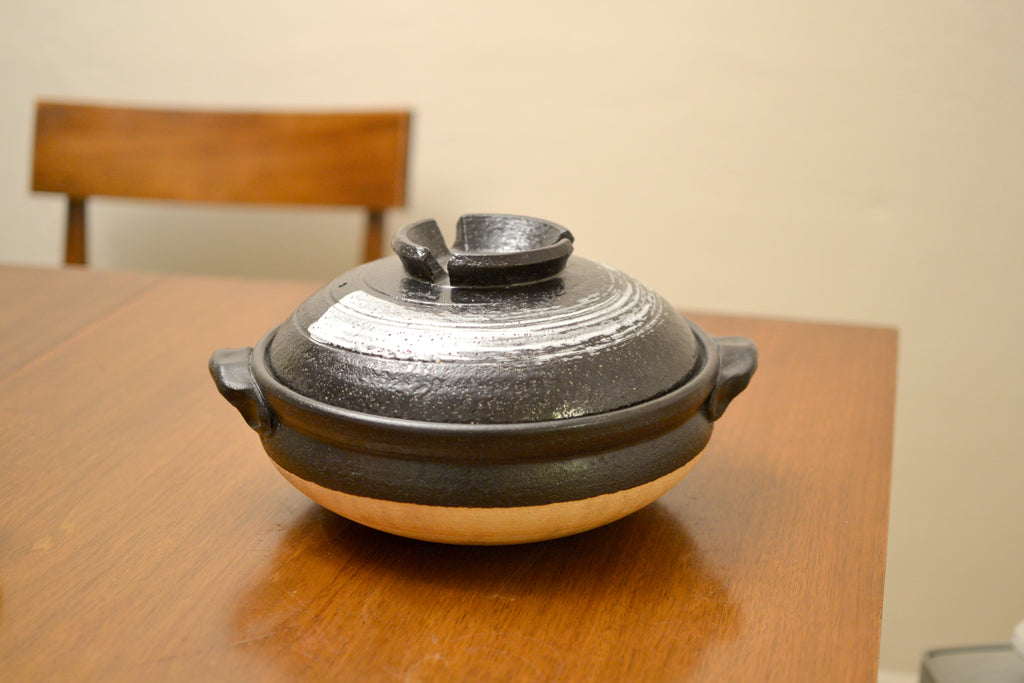
I've had my donabe (nabe for short, pronounced nabeh) for several years now. They're like family heirlooms – creating memories in the kitchen and around the dinner table. That's the best part of donabes – they are meant to be used over a flame in the kitchen, then can be transferred to the table to finish off the cooking! Whether it's a night of shabu-shabu, sukiyaki or yu-dofu (warm tofu), it is one-pot cooking, serving and cleaning! They aren't just handsome, but totally functional – perfect for a lazy creatures like me, who is always scheming of how to cut down on the dish washing.
Since it's gotten colder in the last few weeks, I have made nabe several times. It's safe to say that this is a weekly ritual in our household, whether it is just me and Johnny, or inviting over friends. Why so often? Cause it is SO EASY. With the holidays being as crazy as they are, it's nice to have a warm and cozy meal at home without any fuss. Plus you can adjust the ingredients according to what you have in the fridge, or what you're in the mood for. I usually have nabe when I've been eating out a lot and my body needs a little break. It's a wonderful way to relax and detox with leafy green vegetables, tofu, and some seafood (with a glass of sake of course) . Want some red meat in there? Make it shabu-shabu!
Here's what I prepared for a simple nabe night with a group of my closest friends. It is possibly the easiest dinner party you will ever throw in your life. Adjust the amount of vegetables, seafood, and meat according to the number of people invited. The more the merrier!
INGREDIENTS
Dashi
3 qts water
3 dashi packs
1 piece of konbu, about 3" x 3" square
Vegetables
Head of Napa cabbage
1 bunch of green onions (get Tokyo Negi if it is accessible)
1 bunch shungiku (chrysanthamum greens)
If you can't get shungiku, get leafy Chinese greens like bok choy or yu choy
1/2 lb shiitake mushrooms
1 pack of enoki mushrooms (or any mushrooms you prefer)
1 block tofu (I like medium firm)
Tsukune Balls
1/2lb ground chicken
1 tbsp Liquid Shio Koji
1 tbsp grated garlic
Few turns of fresh ground pepper
Noodles
1 pack of shirataki (yam noodles)
Udon noodles
Optional
Scallops, clams, shrimp, crab, squid, scallops etc. Any shellfish or white fish is great in nabe!
Portable gas cooking stove
Condiments
Garlicky Gomadare
Yuzu kosho
Ponzu
METHOD
1. Prepare dashi about an hour before dinner time. I make dashi using these handy dashi packs – which I love. They are essentially tea bags filled with dried fish flakes like ago (flying fish) or katsuo (bonito). You can find dashi packs at Japanese markets. I also add some konbu to the pot to enhance the umami then let this all simmer on low for about an hour. Follow Yoko's Definitive Guide to Making Dashi for further pointers in the art of making dashi.
2. Cut vegetables and tofu.
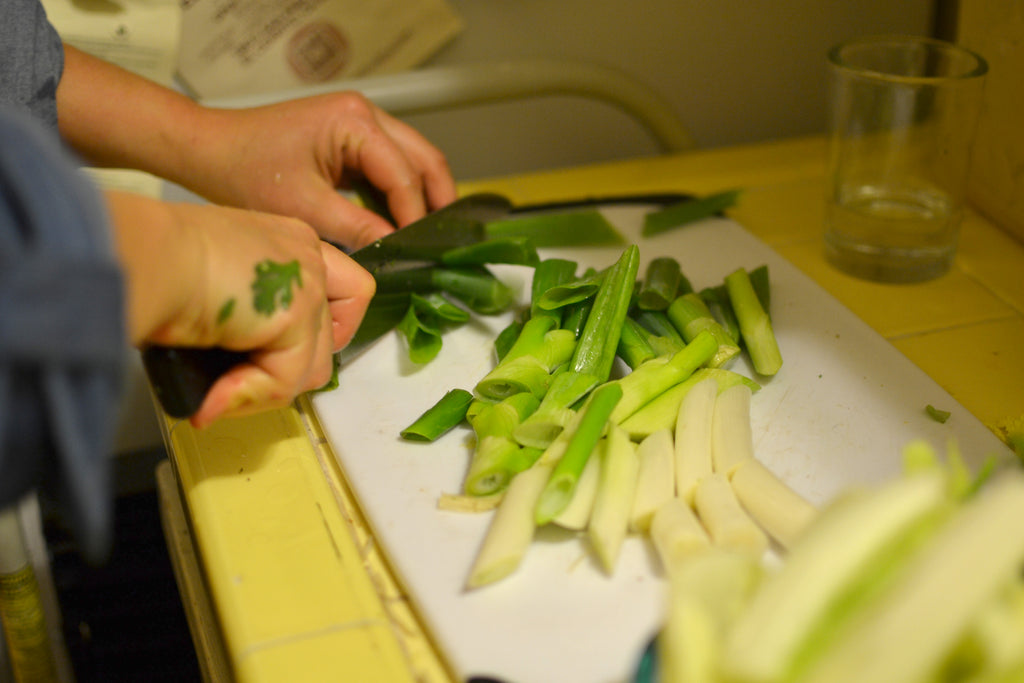
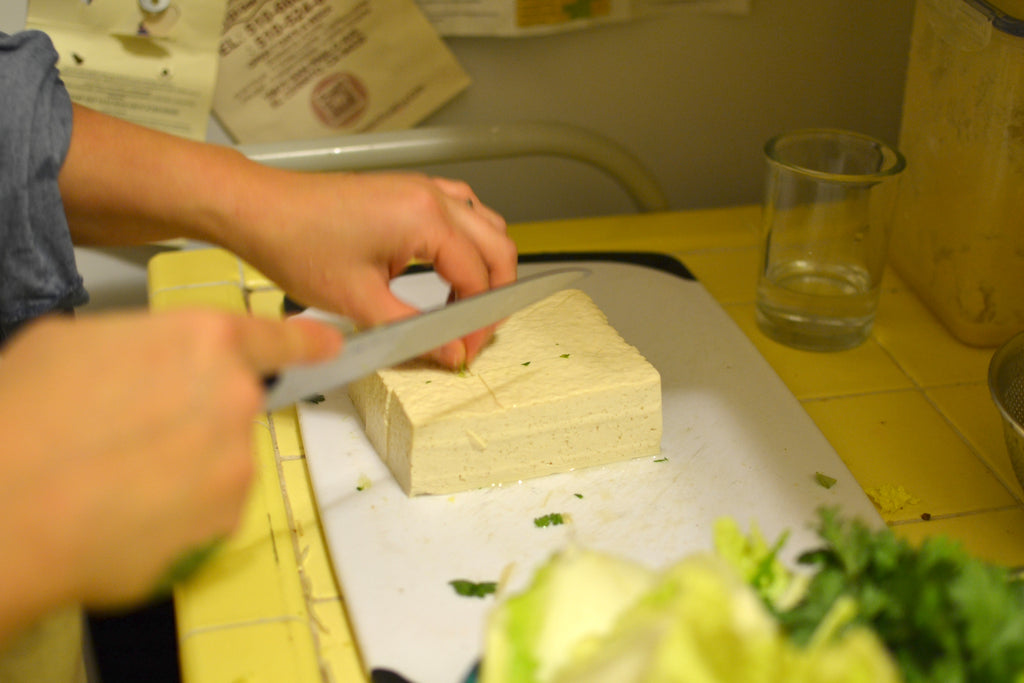
3. Clean clams – I really like clams in my nabe cause they are easy, cheap, and they have a lot of flavor. I usually soak them in water for at least 10 minutes to get any sand or grime off of them. I splurged for our party and got scallops – one per person!
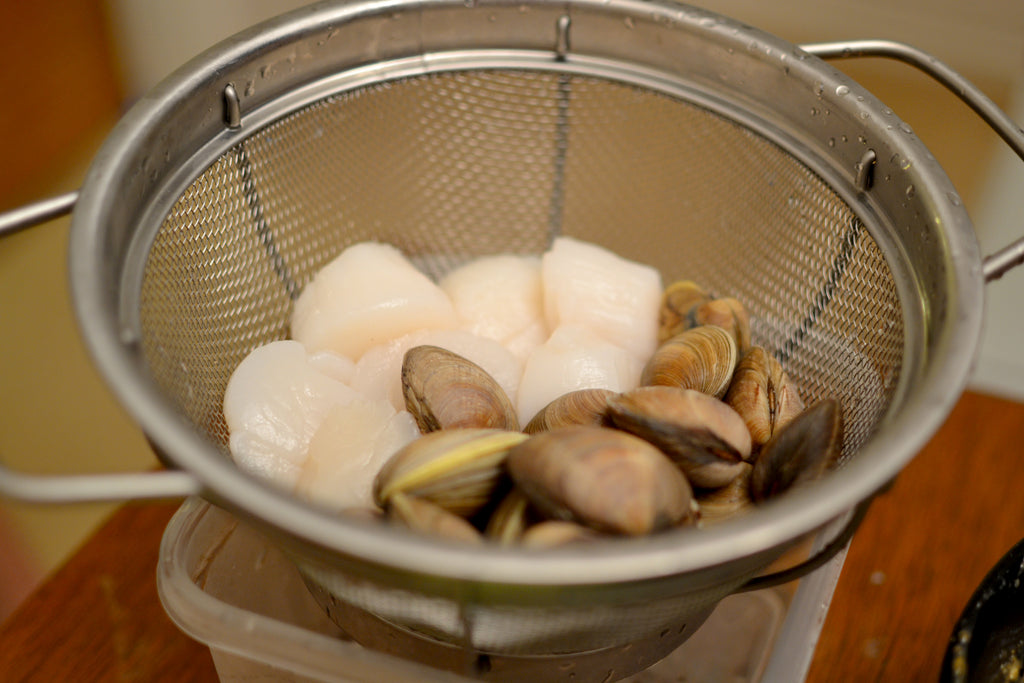
4. Garlicky Gomadare, from our Japanify All Day Zine written by Yoko, is pretty mandatory for nabe. I would recommend making this either the night before or in the morning. It is a labor of love to make and your efforts will not go unnoticed by your guests. It is a phenomenal accompaniment to nabe.
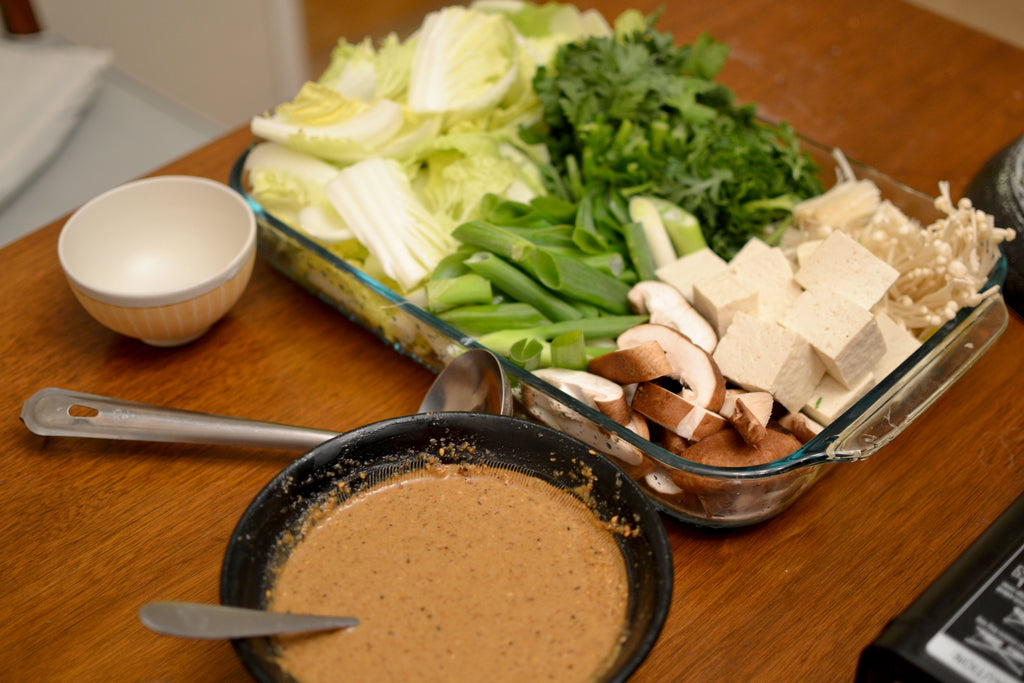
5. Ball up the tsukune (ground chicken balls). I usually just spoon a portion into my hand and make it into a ball, about 2" in diameter. You'll make about ten balls with every half pound of meat.


6. If you are using a portable gas stove on the table, set it up and make sure you have an extra gas can! Lay out all vegetables, seafood, and condiments out on the table.
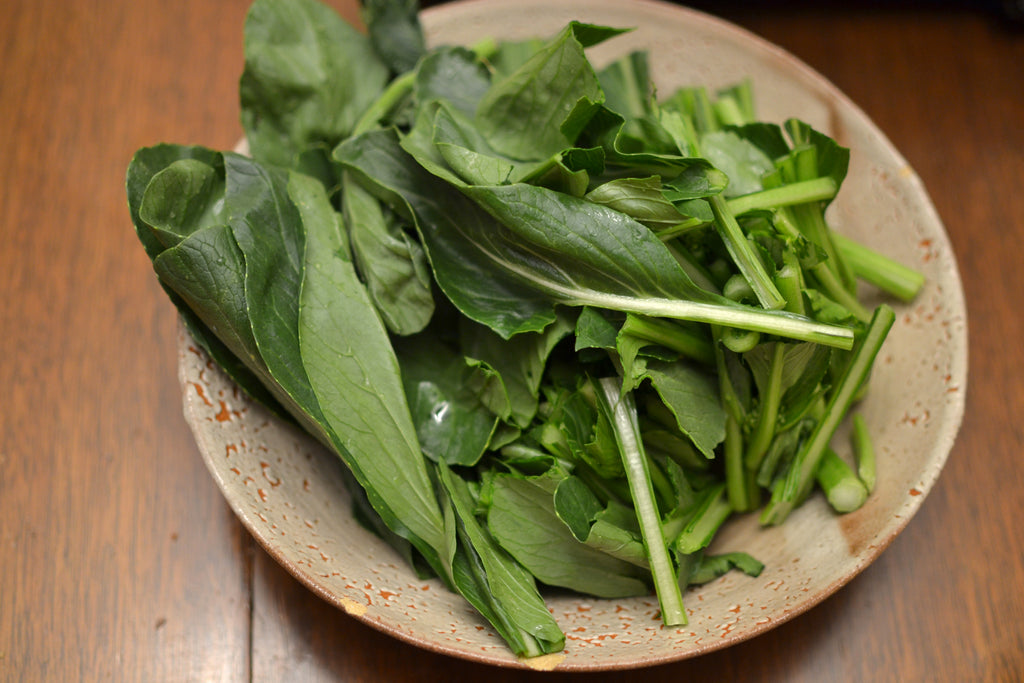
You absolutely don't need a portable gas stove unless you are making shabu-shabu, where you need a constant heat source to cook meat. For a nabe like this one, you could just put your ingredients together in the donabe on your stovetop, then bring the nabe out onto a trivet when it's done. For this party however, we did use a portable gas stove.
7. Add dashi into the donabe.
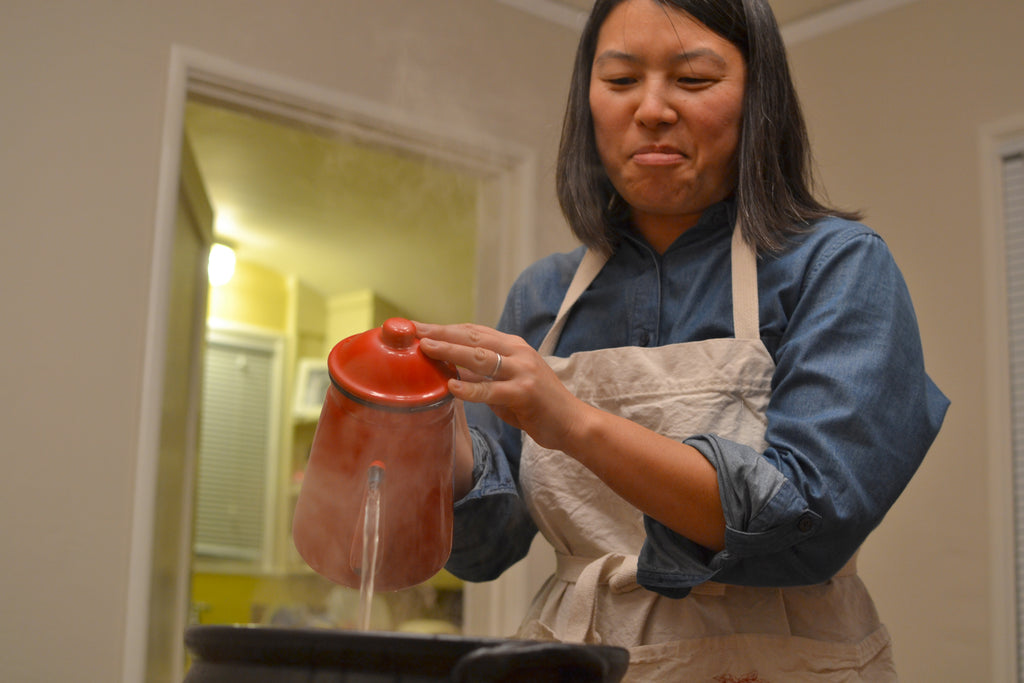
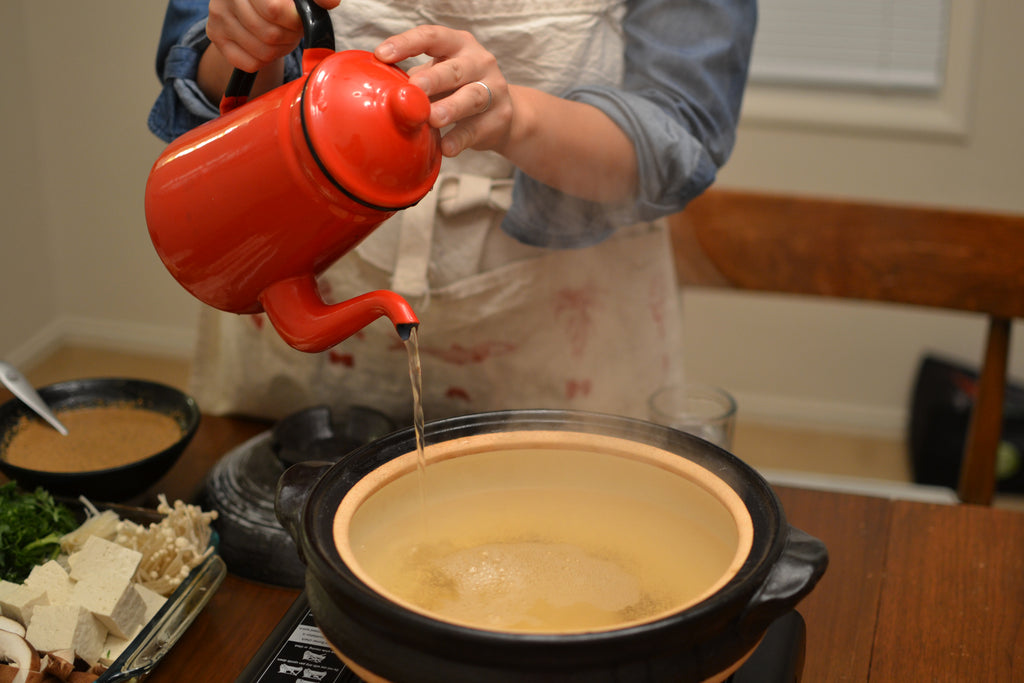
8. Put the napa cabbage in first since it takes the longest to cook, along with mushrooms, tofu, negi, and shungiku. It's always nice to start with some simple vegetables.
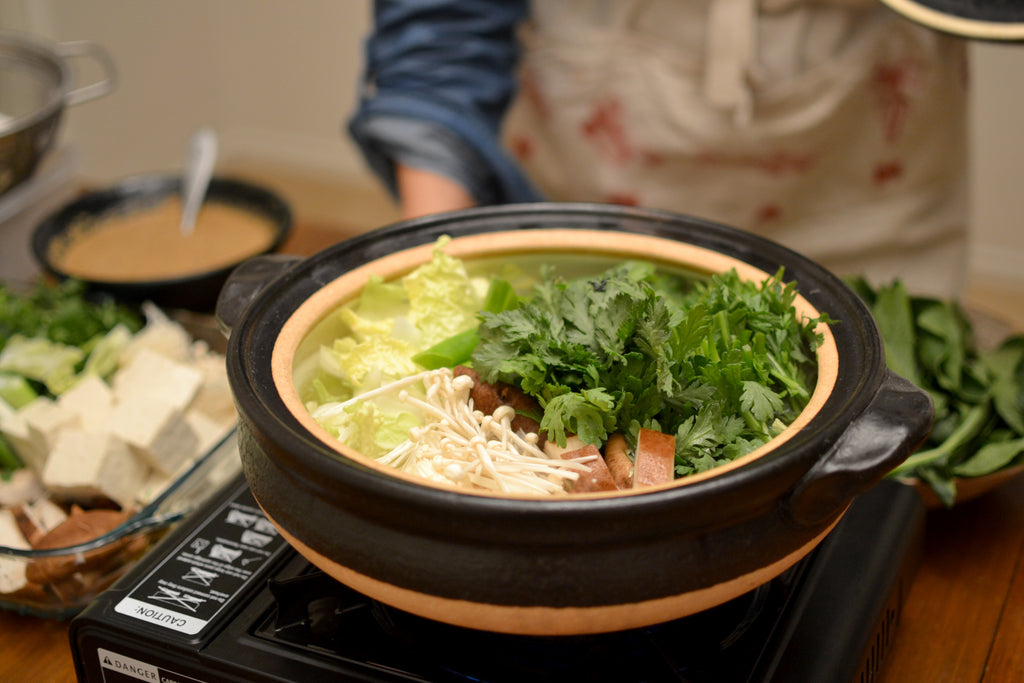
9. Once the vegetables are ready, start serving into bowls! Everyone can pick and eat at their leisure.
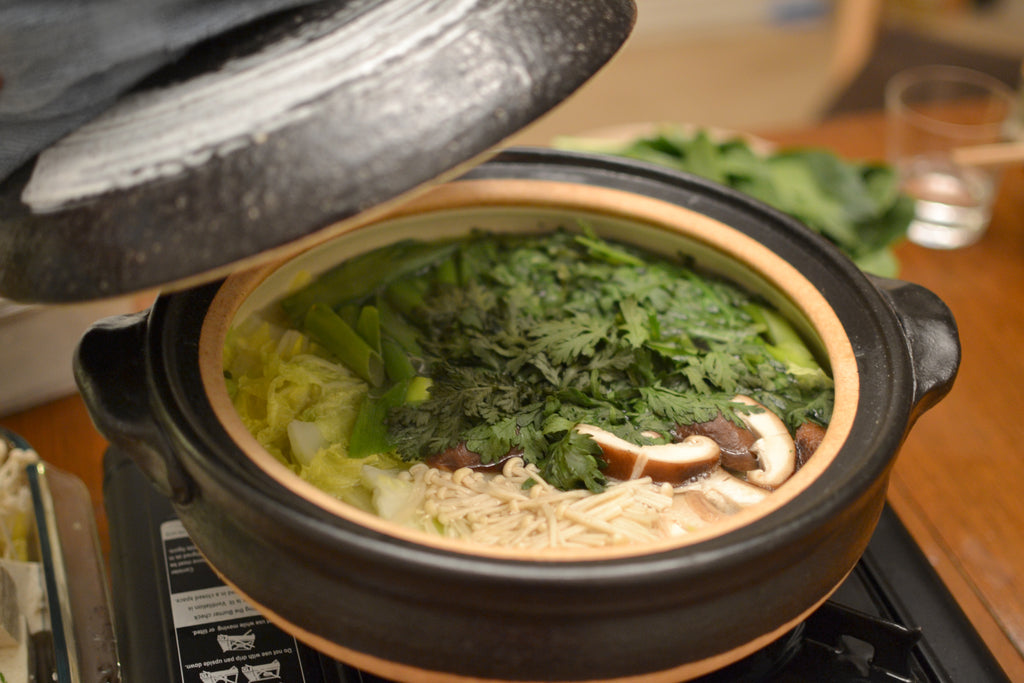
10. When the nabe is empty again, fill it up with more dashi, vegetables, shirataki, seafood, and tsukune.
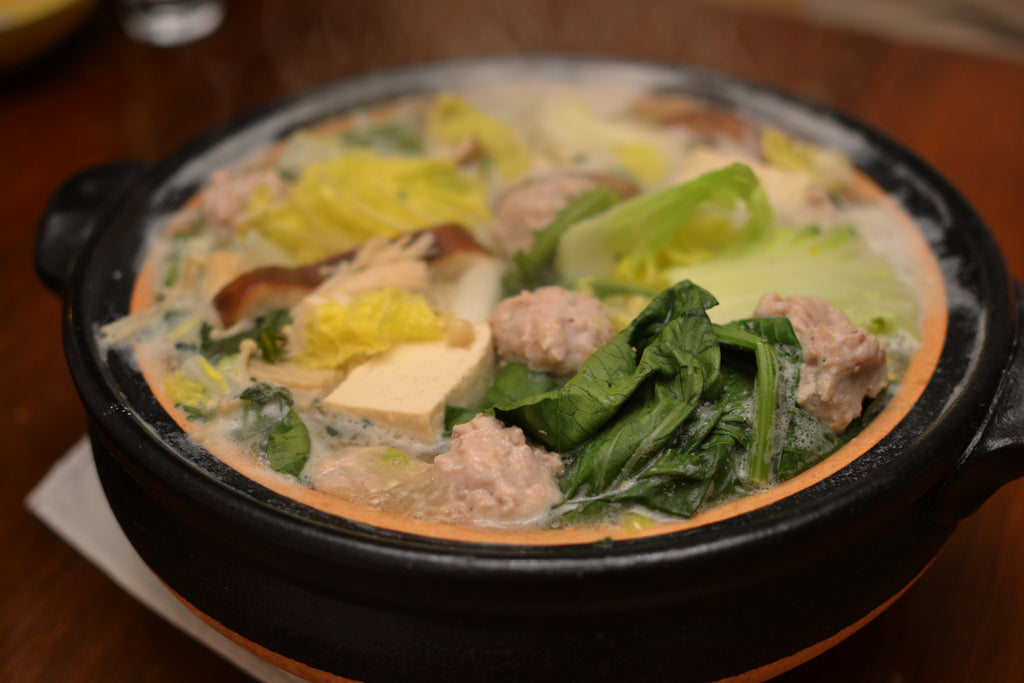
11. Keep going like this all night, with plenty of sake to accompany the meal!

There's nothing quite like a nabe party – it is fun, cozy, and communal. It is just one way to enjoy all of what the donabe has to offer.
Check out all of our donabe products and sets to get started on your donabe life!






Comments (0)
There are no comments for this article. Be the first one to leave a message!